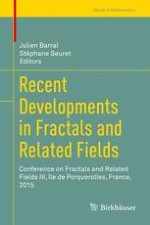This contributed volume provides readers with an overview of the most recent developments in the mathematical fields related to fractals, including both original research contributions, as well as surveys from many of the leading experts on modern fractal theory and applications. It is an outgrowth of the Conference of Fractals and Related Fields III, that was held on September 19-25, 2015 in île de Porquerolles, France. Chapters cover fields related to fractals such as harmonic analysis, multifractal analysis, geometric measure theory, ergodic theory and dynamical systems, probability theory, number theory, wavelets, potential theory, partial differential equations, fractal tilings, combinatorics, and signal and image processing. The book is aimed at pure and applied mathematicians in these areas, as well as other researchers interested in discovering the fractal domain.
